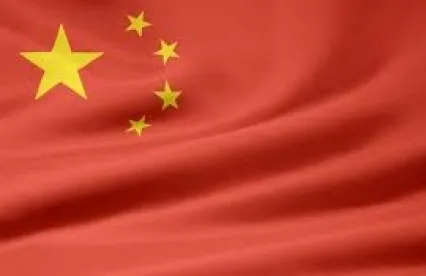The Office of the U.S. Trade Representative (USTR) has announced procedures for requesting product exclusions from the additional 25% ad valorem tariff imposed on certain Chinese goods under Section 301 of the Trade Act of 1974. The announcement of exclusion procedures coincided with the imposition of the first phase of tariffs on July 6, 2018 covering 818 tariffs subheadings listed in USTR’s Federal Register notice on June 20. https://www.gpo.gov/fdsys/pkg/FR-2018-06-20/pdf/2018-13248.pdf. The tariffs were imposed following USTR’s investigation of certain acts, policies and practices of the Chinese government related to technology transfer, intellectual property and innovation. The goods identified take aim at industrial sectors that are part of China’s Made in China 2025 initiative.
Interested persons wishing to seek an exclusion will need to act promptly to meet the deadline for filing requests that comply with the specific procedures and criteria set out by USTR. Exclusion requests must be filed no later than October 9, 2018. Requests will be open for response within 14 days after the request is posted in USTR’s docket number USTR-2018-0025 at www.regulations.gov. Replies to responses will be due 7 days after the close of the 14-day response period.
USTR will consider each exclusion request on a case-by-case basis taking into account whether the exclusion would undermine the objective of the Section 301 investigation. Any granted exclusion will apply retroactively from July 6, 2018 and will remain effective for one year after publications of the exclusion determination.
Rationale for Requested Exclusions
USTR has indicated that each request should address the following factors describing the rationale for the requested exclusion:
-
Whether the particular product is available only from China.
In addressing this factor, requesters should address specifically whether the particular product and/or a comparable product is available from sources in the United States and/or in third countries.
-
Whether the imposition of additional duties on the particular product would cause severe economic harm to the requester or other U.S. interests.
-
Whether the particular product is strategically important or related to “Made in China 2025” or other Chinese industrial programs.
Requests may also include information on the ability of U.S. Customs and Border Protection to administer the exclusion, as well as any other information or data considered relevant to an evaluation of the request.
Required Information
Each exclusion request must include the following information:
-
Identification of the particular product in terms of the physical characteristics (e.g., dimensions, material composition, or other characteristics) that distinguish it from other products within the covered 8-digit subheading.
-
The 10-digit subheading of the HTSUS applicable to the particular product requested for exclusion.
-
The annual quantity and value of the Chinese-origin product purchased by the individual requester (or by the members of a trade association requester) in each of the last three years, or an estimate of quantity and value if precise information is not available.
If exclusion is sought for more than one product, a separate request is required for each product. Requests that include business confidential information must be accompanied by a public version for posting in USTR’s online docket.
USTR has prepared a form for exclusion requests and strongly encourages its use. Although use of the form is not required, it is available at
Different Procedures than Commerce’s Steel and Aluminum Exclusion Process
Those familiar with the Commerce Department’s exclusion process for Section 232 steel and aluminum tariffs will note some key differences in the procedures announced by USTR:
-
Unlike the 232 process, trade associations may file requests for exclusion from the Section 301 tariffs. Recent experience demonstrates however that “on the ground stories” of individual companies are given consideration.
-
Section 232 exclusions are available only to the requesting party, but exclusions from the Section 301 tariffs will be available to all importers of an excluded product. USTR will not consider requests that identify the product at issue only in terms of the identity of the producer, importer, ultimate consumer, actual use or chief use, or trademarks or tradenames.
-
The Section 232 process allows filing of exclusion requests at any time. Requests under USTR’s process must be made by October 9, 2018.
-
USTR’s procedures require that responses to requests for exclusion be filed within 14 days and permit replies to be filed to those responses. Under Commerce’s Section 232 process, objections to requests are due within 30 days, but no replies are permitted to objections.
-
Exclusions under USTR’s process will apply from July 6, 2018, the date the Section 301 tariffs were imposed. Exclusions granted by Commerce from Section 232 tariffs are effective only from the date that the exclusion request is posted in Commerce’s online docket, not the date that the tariffs were imposed.
-
Commerce has advised that its review period normally would not exceed ninety days. USTR has not indicated a time period for its review of exclusion requests.
Public Comment on Proposed Additions to Section 301 Tariffs
In addition to the Section 301 tariffs effective on July 6, 2018, USTR has requested comments on the proposed imposition of the same 25% tariff on other Chinese goods accounting for an additional $16 billion in annual trade.
USTR established procedures in its June 20 Federal Register notice for public comment on the list of tariff subheadings being considered for the second phase of tariffs. Written comments must be submitted by July 23, 2018. A public hearing will be held on July 24, 2018 and requests to appear at the public hearing were required to be submitted by June 29, 2018. Post-hearing rebuttal comments will be due on July 31, 2018.
USTR requests that commenters specifically address whether imposing duties on a particular subheading subject to proposed duties would be practicable or effective to obtain the elimination of China’s acts, policies and practices, and whether maintaining or imposing additional duties on a particular product would cause disproportionate economic harm to U.S. interests, including small or medium size businesses and consumers.
Affected parties should consider providing comments to USTR. Submission of comments can be effective in reducing the scope of the proposed tariffs. After consideration of comments in its initial review, USTR removed 515 tariff subheadings from the initial list of 1,333 proposed to be subject to the first phase of Section 301 tariffs.




 />i
/>i

